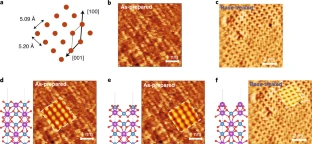Science Daily March 10, 2021
Altering crystal facets exposed on the surface of photoelectrodes used for solar fuel production has been a major strategy for optimizing their properties. There are numerous ways to terminate the surface even for the same facet, which can considerably alter the photoelectrode properties. A team of researchers in the US (University of Wisconsin, University of Chicago, Brookhaven National Laboratory, Stony Brook University, Argonne National Laboratory) investigated using tightly integrated experimental and computational investigations of epitaxial BiVO4 photoelectrodes with vanadium- and bismuth-rich (010) facets. The study demonstrated that even for the same facet the surface Bi:V ratio has a remarkable impact on the interfacial energetics and photoelectrochemical properties. They elucidated the microscopic origins of how the surface composition can affect the photoelectrochemical properties. The study opens an unexplored path for understanding and engineering surface energetics via tuning the surface termination/composition of multinary oxide photoelectrodes… read more. TECHNICAL ARTICLE

Experimental and simulated STM images of BiVO4 (010). Credit: Nature Energy (2021)